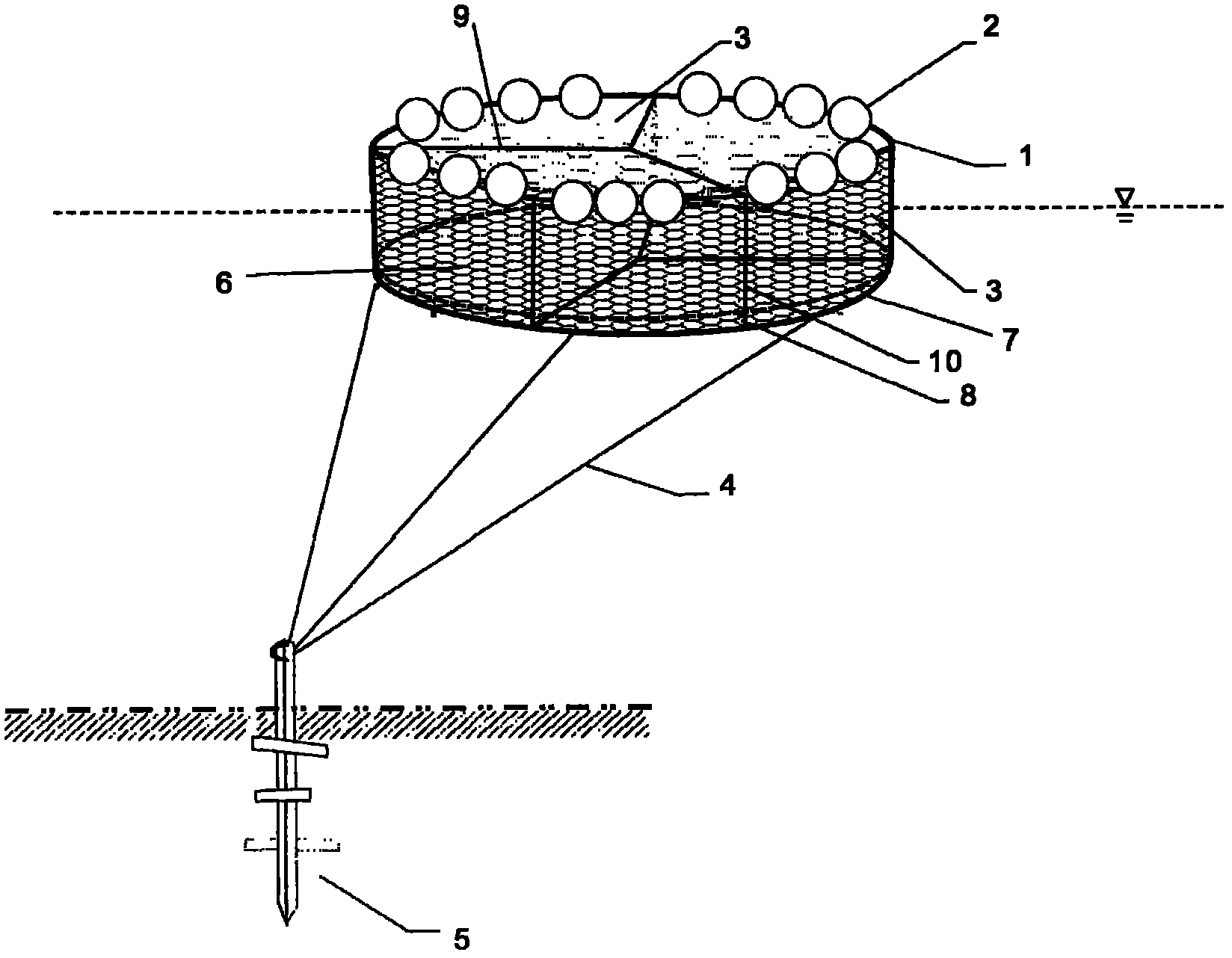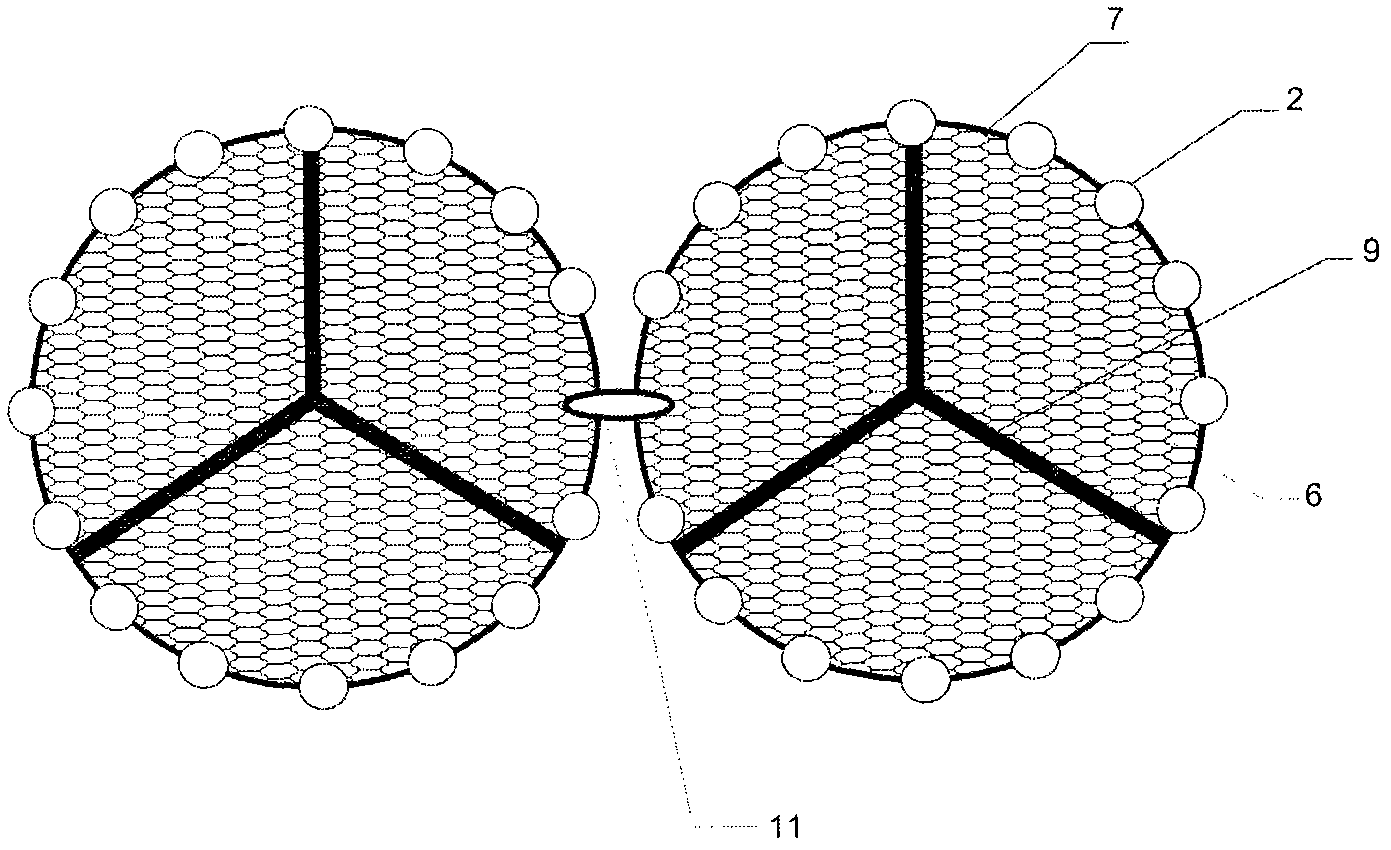Method for constructing floating wetland
A construction method and wetland technology, applied in chemical instruments and methods, sustainable biological treatment, water/sludge/sewage treatment, etc., can solve problems such as exacerbating the decline of floating plants, loss of water purification ability, and decline in water purification efficiency. Achieve the effect of species richness, increase water transparency, and long time
- Summary
- Abstract
- Description
- Claims
- Application Information
AI Technical Summary
Problems solved by technology
Method used
Image
Examples
Embodiment Construction
[0015] The structure, manufacture, installation, plant configuration and use of the floating wetland structure of the present invention will be further described below in conjunction with the accompanying drawings.
[0016] 1. Making a floating carrier
[0017] see figure 1 , 2 , the floating carrier is a wire mesh barrel without a cover, and the barrel frame can be made of Φ12mm steel bars to make upper and lower two rings 1 and 7 with a diameter of 2m-3m, and the upper ring 1 is connected with 20-40 pieces of Φ80- 120mm foam float 2. Use 3-6 long steel bars 10 of the same type of 25-40cm between the upper and lower rings to weld to make a cylindrical frame with a height of 25-40cm, and use a wire mesh (such as a fishing net) with a mesh diameter of 2-4cm 3 Wrap the side and bottom of the cylindrical frame and fix it on the frame to form a wire mesh barrel without a cover. The upper and lower ring planes are also welded with Φ6-12mm steel bars to form reinforcing ribs in a...
PUM
 Login to View More
Login to View More Abstract
Description
Claims
Application Information
 Login to View More
Login to View More - R&D
- Intellectual Property
- Life Sciences
- Materials
- Tech Scout
- Unparalleled Data Quality
- Higher Quality Content
- 60% Fewer Hallucinations
Browse by: Latest US Patents, China's latest patents, Technical Efficacy Thesaurus, Application Domain, Technology Topic, Popular Technical Reports.
© 2025 PatSnap. All rights reserved.Legal|Privacy policy|Modern Slavery Act Transparency Statement|Sitemap|About US| Contact US: help@patsnap.com



